All posts by Gary Stockton
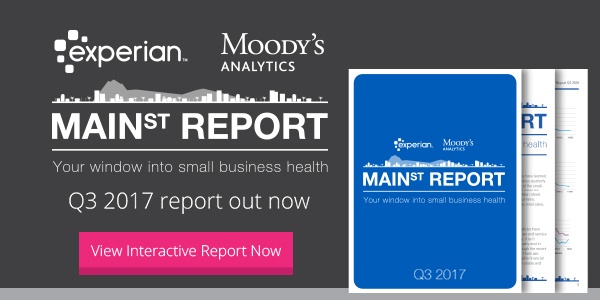
Experian has just released the Q3 2017 Experian/Moody's Analytics Main Street report and the overall outlook for small-business credit is stable. The report states outstanding balances on small-business credit declined slightly in the third quarter, continuing a two-year trend. Delinquency and default rates were steady to declining, and business balance sheets continue to improve. Continued improvement in the labor market and economic growth bodes well for credit performance in the short term. Despite the overall optimism, pockets of localized weakness are developing and will warrant observation over the next few quarters. “Small business credit conditions are good and steadily getting better. Businesses are paying on their obligations in an increasingly timely way and remain cautious in their new borrowing. There are some credit problems in different parts of the country in various industries, but they are few and far between.” Mark Zandi, Chief Economist, Moody's Analytics An expanding economy supports credit performance As small businesses continued to keep credit utilization low, paying down debt, delinquencies overall continued to trend downward. Early-stage delinquency rates improved during the quarter while the 90 days past due (DPD) delinquency rate experienced a slight 5 basis point increase. The most severe delinquency category, 91+ days past due, declined as some distressed credit was charged-off. The decline in late-stage delinquency was offset somewhat by an increase in bankruptcy rates. While the report contained mostly good news, there were a few surprises, including Wyoming, which saw a slight increase in 90-days past due delinquency in mining, construction, transportation and retail, pushing the state’s delinquency rate by almost half a percentage point. We have put the entire contents of the Experian/Moody’s Analytics Main Street Report into an interactive page, complete with dynamic charts.
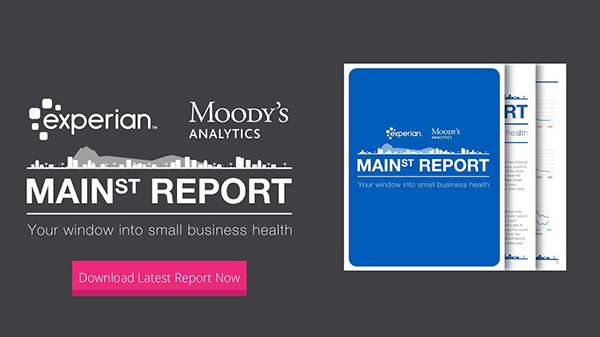
Experian and Moody's Analytics have just released the Q2 2017 Main Street Report. Developed by Experian and Moody’s Analytics, the Experian/Moody’s Analytics Main Street Report brings deep insight into the overall financial well-being of the small-business landscape, as well as providing commentary around what certain trends mean for credit grantors and the small-business community. Q2 highlights Small-business delinquency rates experienced broad-based improvement in the second quarter. With job growth expected to continue, putting more money in consumers’ pockets, small businesses will continue to outperform in the short term. As performance on small-business loans and lines of credit improves, credit is expected to flow more freely as banks and other lenders compete for business. Although tax reform and infrastructure investment could provide an additional boost to small-business activity, consumer spending will be the driving force for small-business credit over the next quarter — and throughout the rest of the year. Business delinquencies push lower Small-business delinquencies continued to trend downward in the second quarter. Both early- and late-stage delinquency rates saw improvement over the quarter. This trend has been firmly in place over the last two years and was expected given the continued slow but steady growth in the economy. Download Main Street Report

The Consumer Financial Protection Bureau (CFPB) is engaged in increasing its understanding of the opportunities and potential challenges associated with consumer permissioned account data. The agency launched a request for information on the topic in November 2016 and is currently analyzing information it received prior to the February 2017 comment deadline. In remarksat a field hearing in conjunction with the launch of the RFI, CFPB Director Cordray stated, that "access to digital financial records is critical. As with your student records or medical records, your financial records tell an important story about you. With health care, for example, if you can see your records, it is easier to participate.” Demand for financial account data goes beyond consumer loans and its use in the small business credit-granting process has been increasing. Experian recently entered a partnership with Finicity to develop new tools that will make it easier for small businesses to apply for a loan and to accelerate loan underwriting. These tools are used for authentication, verification of income and assets, and cash flow analysis. These tools improve accuracy and reduce fraud risk for lenders, thereby broadening access to loans. Experian's new Digital Verification Solutions leverage Finicity's data aggregation and insight platform. Experian is the first credit bureau to implement this technology, which gives small businesses the opportunity to secure loans with less paperwork and hassle by connecting with financial institutions digitally. While this information is currently limited in use for credit risk analyses for small business lending, Experian believes that user-permissioned account aggregation platforms will increasingly provide an opportunity to collect and analyze cash flow and recurring payment information relevant to lenders in making credit decisions. For example, user-permissioned data from a businesses’ bank account could demonstrate the entity’s payment history for utilities and telecommunications services, as well as for monthly rent. With respect to the collection and use of data obtained through account data aggregation platforms, it is important that a borrower grant permission pursuant to clear statements about how the consumer's information will be accessed and how the data will be used. Such statements should include whether the data will be shared with third-parties, and for what purposes. It is vital for market participants — both financial institutions and account aggregators — to continue to work together to develop cooperative agreements that allow data to be accessed, analyzed and shared in an efficient and secure environment. Recently, several account aggregators have formed direct agreements with financial institutions and there is ongoing work to develop best practices and industry standards for secure consumer and business access to financial data. In the past, the CFPB has promoted this ecosystem. As with other commercial credit data, financial account data can be used to make decisions throughout the credit lifecycle. This includes supporting pre-qualification when a business is prospecting for new customers; conducting credit risk analysis and verifications; managing portfolio risk; and if necessary, collecting on unpaid or overdue debts.
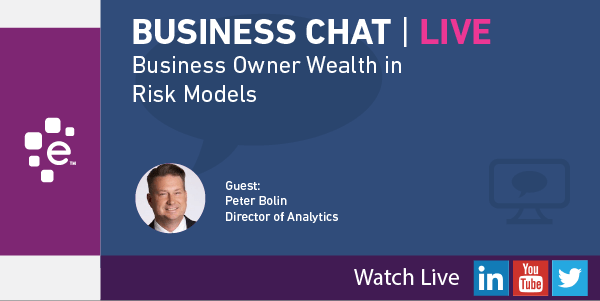
This week for Business Chat | Live we interviewed Peter Bolin about business owner wealth, and how lenders are finding new ways to evaluate entrepreneurs in the underwriting process. Gary: Today we're going to have a discussion on business owner wealth and evaluating business owner wealth in risk models. Joining me today is Mr. Peter Bolin. He's the Director of Analytics and Consulting for Experian. Good morning Peter. Peter: Good morning Gary. Good morning everyone. Gary: Let's just kick off this discussion. Business owner wealth and small business owners and evaluating risk. What's it all about? Peter: Yeah, thanks Gary, thanks everyone. As I travel around talking to a hundred clients a year, one theme that always comes back is, "Hey Pete, can you and Experian help us get to yes?" We know that there is a pool of small businesses, a pool of small business owners out there that are small, that are emerging, that are cutting edge, maybe not solid yet, but they don't have a credit file, what we typically call maybe credit invisibles or maybe thin files, but we know that they have a good idea, we know that they've good product and services, but we can't approve them. Is there anything you can do to help us get to yes? At Experian we got to thinking about that. We have a tremendous amount of data assets as everyone know. We looked around and we said, "Hey, there is this new product that we have called the Wealth Opportunity Score," and that estimates, based on our proprietary database, the wealth of an individual. We got to thinking, does wealth of a business owner affect the opportunity to be approved? That's what we're here to talk about today, Gary. Can we use the Wealth Opportunity Score on a business owner based on a sample of our data, we have some great results, and we definitely feel that we can help lenders, wholesalers, target marketers, get to yes. Gary: Okay. So you mentioned getting to yes. What does that mean in terms of say, a new business or a business that has say, a very thin credit file? How does that work? Peter: The first thing that we do when we're evaluating any new data source, and while wealth insights have been at Experian for a year or two, it's new, we're introducing it for the first time to the commercial space for the business owner, the first thing we do is say, "Okay, can we get a predictive lift by using this data?" The answer is yes. In particular, can we use this in the thin file, in the very, very small, emerging businesses that maybe we could refer to as the credit invisibles. It's kind of an overused term. Invisible to who? So, we're using this in this example as credit invisible are a very thin file or maybe have no file on the commercial credit report. We took a sample of business owners in that population and we added this Wealth Opportunity Score as an attribute within our demographic only segment, and we said, "Yes, indeed, this does help the predictive power of that segment." Going from a KS of a 16 to a 23. A KS for those of you who might not know, that's the Kolmogorov-Smirnov statistic, that's the industry standard for measuring the predictiveness of the model, the higher the KS the better the separation between the goods and the bad. We're seeing that yes, by just including this data, on the credit invisible/thin file, that segment was able to improve the predictive power by 43%. Gary: Wow, that's incredible. So, we discussed the better prediction of risk using the owner wealth. What does rank ordering have to do with that, and why is that such a big deal? Peter: As quant jocks sometimes we get overly, overemphasize the KS, the rock, the Genie, area under curve and those are all important statistics, but we can't forget about another critical part, which is the stability of the model. That's where we look at how well it rank orders. We'd like to see a nice, smooth monotonic progression in the rank ordering of the bads throughout the decile. We would like to see a large number of bads pushed down to the riskiest scoring, and fewer number of bads pushed up to the least risky. As you can see, when we added the Wealth Opportunity Score to our demographic only file, we got a nice, more smooth monotonic progression, which says not only do we get lift like we talked about in the first slide, but we're also improving the stability of the model, which is very, very important. As you can see, it's still a little bit choppy. Some of you might say, the skeptics out there might say, "Gee, Pete, this is all pretty choppy." However, keep in mind this is a demographic thin file, not much to go on other than some key demographic items, but by adding the Wealth Opportunity Score we're able to increase the predictiveness and the stability of the model. Gary: Wow. Okay, so there's been a lot of talk about women-owned businesses, minority-owned businesses lately. How does wealth play in the role in accessing credit for minorities, and in particular women-owned businesses? Peter: Absolutely. Gary, that's a huge topic right now, access to credit. Do minority-owned businesses and especially women-owned businesses have access to credit? We're also looking at data to help evaluate that. The next thing we did was, we were curious. Okay, is there a difference between a male-owned business and a female-owned business when it comes to wealth? Really, if you look at the bottom two lines on the curve, you see that there's really not. They're pretty similar. They are fairly similar. There is some blips on the lower side, so if you're looking at the left side of the graph, you do see where that pink line is the female owner, they do tend to have slightly lower wealth, and that's measured on the first Y axis. What we're saying is that there's really no difference. If you're looking at wealth, there isn't much difference between a woman-owned business and a male-owned business, so that should not be a prohibitor in access to credit. The other thing that we looked at on the other, secondary X axis, is the whole concept around annual spend. This is annual spend on the business owner personally, not the business, so I just want to make that clear. We looked at that, and we saw similar trends, that there really wasn't much difference in spending except in the very, very high quadrant up there, there was a little bit of difference in the extremely wealthy. Actually, it says that male owners, male business owners, had much more annual spend. So, not only were we introducing the Wealth Opportunity Score, which is a new concept in commercial lending, we're also looking at the total plastic spend on the business owner personally, which we found is a very powerful indicator, especially when you're trying to target market. Gary: Excellent. Okay, changing gears a little now, to target marketing and how does wealth help with those that are maybe in the market for credit? Peter: Well, it's very interesting Gary, because what we find is that there's an inverse relationship between wealth and in the market, so very, very wealthy owners are not as in the market based on our in the market score. We have a business credit seeker model, which predicts the likelihood that someone's going to open up a new trade, so, that they're in the market. They're really serious about it. We threw these attributes and this scores into that model, and what we found is that intuitively I think that it makes a lot of sense as well. What we see is that lower wealthy business owners are more in the market, right? They don't have any personal wealth. They need capital. They need access to capital. They're anxious to get capital. There's a higher percentage of the lower wealth spectrum that are looking for credit. However, however, that's not to say that the high end, so if you look at the very high end, three million or more in wealth, there's also a percentage, 9.5% of the population that are also looking for credit. They could be a small business, they could have two employees or less, they could be around for two years or less, but they have high net worth. They might be invisible on the commercial side and this Wealth Opportunity Score will definitely help them, help lenders and wholesalers get to yes. Gary: Are there other particular industries that you recommend targeting with the new business credit seeker model? Peter: Sure, that was the other kind of thing that was surprising to me, I'll be very frank. This surprised me, because when we looked at the industries and then we plotted the risk scores, and then we plotted the bad rates, and then we looked at the wealth of the individual, or sorry, not the wealth at this particular point. What we're looking at here is the actual in the market. What we found is that the industries that have the highest in the market percentage, which is measured on the blue bar, and then we look at their average IPV2 score, that's Experian's commercial risk score predict a likelihood of a trade going 91-plus, we see a convergence that the agricultural, wholesale trade and mining industry, which surprised the heck out of me, were the three industries that have the highest percentage and likelihood to be in the market, and also had the highest IP score, which means they have the lowest risk. The mining industry in particular, Gary, is shocking, because over the last eight years, without me getting too politically sensitive, that industry has taken a battering in the last nine years. Big cuts, big cutbacks, in traditional coal mining, and what we're seeing now, with some of the new administration's outlook on mining, the regulations are coming off and we're predicting that this could be a very big growth opportunity for our clients in terms of marketing, in terms of wholesale credit, traditional lines of credit, and traditional term-type credit. The mining industry in the market and a very high IPV2 score, and later on we'll see also some interesting wealth information about that as well. Gary: Excellent. You talked about credit scores. What about bad debt rates and industry targeting? Can you talk a little bit about that? Peter: Yep, very similar results. We also wanted to look and see what the bad rates were for each of these industries to give the viewers an opportunity to see this trend. This is also the exact same thing as you saw with the score, relatively low risk. Agricultural, wholesale trade, mining again, when you look at their bad rates as measured on that secondary axis, but high in the market. Very, very surprising to me, once again, I did not expect to see especially the mining, given the fact that they've been hammered the last nine months, so again, if you're looking about low-risk industries to target, those are the three that I would recommend. Gary: Does owner wealth matter in these industries in particular? Peter: It does, it does, especially again in the mining industry. You see some interesting wealth statistics. If you look at the distribution of the Wealth Opportunity Score, which once again, predicts the wealth of the business owner, or the individual but in this case we scored it with business owners, you see some blips. Those yellow bars, some blips, and as you can see, there's also a tremendous opportunity really up there in that big, look at up there, there's a significant percentage in all three of these industries, but particular mining industry that have extremely high net worth. We already know from previous slides that they have low risk, low bad rates, so again, the mining industry, high wealth, high scores, low bad rates, again, another indication that using this data can help you get to yes. Gary: What about micropreneurs, you know, these businesses that are just emerging, just getting started, they're credit invisible, right? Does the business owner wealth factor come into lending and risk models? Peter: Certainly, and the whole concept of a micropreneur, that's kind of a new term, I'm not even sure it is a word, but maybe we invented it, the micropreneur, a great concept, very, very small businesses. It's not uncommon, Gary, that I get the following statement made to me when I'm talking to clients: "Pete, we don't approve anyone that's been in business for two years or less. We don't approve anyone that has two employees or less. We don't approve anyone who's a sole proprietor. We want to avoid those type of businesses," and I would urge all of the listeners and all of the viewers to think a second time about that, because even if you look at the far right-hand side bar, there are 28% of the population with three million or more in estimated wealth, 28% of that population have been in business or have one or two employees or less. That wealth could be used in your personal guarantee situation, that could be used as collateral. The other nice thing about the Wealth Opportunity Score before I forget is actually evaluating the net worth of an individual. It gives you the opportunity to verify that. It's very common in these situations that if a small business, one or two employees or less, goes in for an application, applies and they have to have a personal guarantee, and they say, "I'm worth $3 million," well, how do you know? Well, with this system you can come to Experian and at least get an estimate that that wealth is right, that you've verified that wealth and that you can set your credit limits, you can set your approval accordingly. So again, what does it mean for the micropreneur? It means that if they have wealth, it's another data point that can help you. Gary: It's helping them get their businesses started. It's helping to drive the economy, which is, at the same time this is good for everybody. It's a win-win situation of, it sounds like to me anyway. Peter: Absolutely. You know Gary, the whole concept of what we're talking about today comes from my personal passion, and I know Experian Business Information Services as an entity's passion, to be an advocate for the small business owners. What we talk about frequently. Through this passion, we're looking at all of our data assets. Can we use our data assets for good? And the good is, as small businesses goes, so goes the United States, and I'm really passionate, and I know Experian Business Information Services is passionate about turning over every leaf, every piece to data, that will fuel small business growth and fuel our economy. Gary: That's awesome. Okay, well this has been excellent Peter. I think if folks are interested in this, we just invite them to drop a comment on the video here if you find this on YouTube, or come to our website, experian.com/b2b. I'm sure we can connect you to Pete and his experts in business information if you want to talk about business owner wealth models. Pete I want to thank you so much for taking time out this morning to come on and talk to us about this topic. I really enjoyed our chat, and we'd love to have you back again in the future. Peter: Thank you Gary. I had a lot of fun. My first live TV spot. Gary: All right, thank you Pete. Have a good day, and- Peter: Thank you. Gary: And have a good day everybody. Thank you so much for coming to our live video. As I said, we're just wading into this. We'd love to have more of these live shows. If you've got ideas for live shows, if there's things about business information, things that would help you be more successful in business or evaluating risk, just send us a note on our YouTube channel. We'd be happy to consider that, and maybe put a show together. Maybe even invite you on as a guest. That's it for today, so thank you everyone and have a good day.

Over the past 10 years, some of America's most venerable industries have found themselves threatened -- if not put on virtual life support -- by aggressive Web-based "disrupters." Traditional hotels and motels now face stiff competition from AirBnB. Old school taxi companies are losing riders to fast and nimble ride-sharing services like Uber and Lyft. Blockbuster Video? Killed by Netflix, Hulu and Amazon Prime. The Yellow Pages? All but killed by Google. And anyone who's been following the brick-and-mortar retail industry knows that Amazon and its digital brethren are in the process of making retail department stores -- along with the shopping malls they anchor -- as quaint as hydrogen-filled balloons. So what's the next industry likely to find itself up-ended by digital disruptors? It may very well be debt collection. Granted, the words “Debt Collection” will sometimes send a shiver through your spine. But past-due accounts are a serious problem for the affected businesses. Not to mention being a drag on the economy as a whole. In an April 27, 2017 article in Forbes, contributing writer Robert J. Sczcerba offers the following statistics: At any given time, there is an estimated $12 trillion in outstanding consumer debt, with $672 billion of that debt being at some stage of delinquency. At least 7,000,000 small businesses in the U.S. have trouble collecting payments from customers. Of these 7,000,000 small businesses, 49% of them had to write off bad debt in the past year and 43% have customers who are more than 90 days late on payments. So, yes, the collection of outstanding debt is a big deal. Which is why the debt collection industry has to innovate. While many hotel chains, retail stores and transportation services have at least tried to keep pace with technological advances -- and customer expectations -- the debt collection industry has remained relatively unchanged for decades. As quoted in the same Forbes article, Christoph Bene, Managing Director at Brock Capital Group, describes it this way: "Fifty years ago, debt collections agencies relied on annoying phone calls and form letters sent through the mail to encourage people to pay their past due accounts. Today, with the ubiquitous use of smart phones, texting, e-mail and social media, the debt collection industry -- yep, you guessed it -- still mainly relies on annoying phone calls and form letters." Which is where Artificial Intelligence (AI) comes into play. AI has the potential to revolutionize debt collection by reaching out to debtors via the media they use, speaking to them in a language they understand, and developing customized solutions based on each person's individual circumstances. For example: The Medium is the Message. There is a growing cultural divide between generations. A business that tries to communicate with recent college graduates the same way they do with retired Baby Boomers isn't going to be in business for long. The choice of communications media -- be it email, text message, live phone call, printed letter -- depends largely on the character of the recipient. And when an agency is dealing with hundreds -- perhaps thousands -- of delinquent customers, it takes a very "smart" application to choose the channel best suited for each message. Context is King. You don't speak to an employer the same way you speak to a sibling -- or a police officer. Similarly, a collection agency can't use the same language when reaching out to a top-earning corporate executive as they do when trying to collect from a single mother of five who's holding down two jobs. With AI, companies will be able to communicate with the tone, vocabulary and incentives most likely to engage the individual recipient -- automatically. Staying Within the Lines. There are myriad state and federal regulations designed to prevent abuses by over-zealous debt collectors. Unfortunately, the industry remains notorious for its use of off-hour phone calls, intimidating language, and other aggressive techniques to try and pry money out of resistant hands. Using sophisticated rules engines, collections agencies can now make sure that they stay on the right side of the law while still disseminating strong, effective communications. Personalized Solutions. If there is one industry where "one size fits all" makes no sense, it's debt collection. Every situation is different. Every debtor has his/her unique set of challenges. Counselors, working one-on-one with customers, may be able to work out win-win payment solutions, but this takes time, talent, training, sensitivity, creativity and money. For many companies, it's just not worth the investment. AI can make this ideal a practical reality. A truly "smart" tool can analyze and weigh literally thousands of payment scenarios in a second, offering up a solution perfectly tailored to the customer's cash flow and competing obligations. Learn as You Earn. Perhaps the biggest selling point about Artificial Intelligence is that it is, well, intelligent. AI does not more than blindly follow a set of instructions. It learns. It adapts. It grows. It improves. Each failure is a lesson. Each success is an insight. As AI becomes increasingly common in the debt collection industry, expect its efficacy to improve by the month. That not only means more cash in the hands of the companies to which it is owed, but also happier, more satisfied customers. Companies such as Intellaegis with their masterQueue product, have been working to streamline the skip tracing space for the past six years taking a smarter BigData approach to vehicle recovery and debt collection. And Experian, always a leader in financial risk and credit management, recently released two advanced tools designed to help businesses improve their collections results. eResolve is the first self-service platform to help consumers negotiate and resolve past due obligations. PowerCurve Collections brings together data, decisions, and the collections workflow in a single, unified system. These are just the first steps in what promises to be a genuine revolution for business collections as artificial intelligence, Big Data analysis, and predictive analytics combine to create automated workflows that work to the benefit of the creditor and the debtor. Businesses will receive more of the money they're owed. Customers will have less debt to manage. And best of all, no more of those annoying dinner-time phone calls.
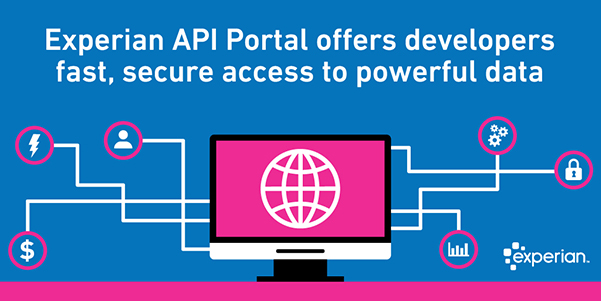
One of the world's largest financial institutions, Citi is determined to keep pace with rapid changes in international commerce. As detailed in the April 2017 issue of PYMNTS.com's B2B API Tracker Citi believes APIs – Application Programing Interfaces – are the key to getting international businesses the financial information they need to prosper. "We realized [our] clients were getting into newer business models which require faster access to payments [and] faster access to information," Mayank Mishra, managing director and global head of channel services for Citi treasury and trade solutions, told B2B API Tracker. "We had to go with a standard that was well-accepted by clients so they wouldn’t have to go through massive infrastructure changes." He noted the company's heavy investments in APIs will give its customers "the flexibility they're looking for to access the relevant information they want." Like Citi, Experian is eager to serve clients in a nimble, open fashion. To address this need Experian has created an API Developer Hub. Found at developer.experian.com, the Experian API Developer Hub is poised to expose the company's deep and detailed data on businesses and consumers, in addition to Experian’s automotive, health, and decisioning services in both the US and across the globe to the developer community. The API Bonanza Although they have been around for years, APIs have recently garnered lots of attention from companies of all types and sizes. "APIs are a technology exposed over the web that allow applications (software programs) to talk to one another," explained Mike Myers, Experian's Senior Director of Product Marketing. "APIs provide software developers with instructions on how to easily access and integrate data that can help fast track new ideas, partnerships, and innovation." Myers leads a team that creates business information APIs for the API Developer Hub, giving developers easy access to Experian's business information to use as they see fit. Laid out simply and intuitively, the Developer Hub serves as an easy-to-use "window" through which users can see: The depth and breadth of information Experian can provide to them How to acquire this information in a form most useful to their company How this information can be easily requested and consumed Serving Both Established Core Customers and Aggressive Start-Ups Myers explained that there are two principal markets for the new API Developer Hub: Mike Myers Experian AgileWorks "The first is our core customers, mainly financial institutions, insurance companies, trade credit, credit managers – basically the user who needs to integrate Experian data to determine their customers’ status, needs to reduce friction and minimize risk when making credit decisions as well as satisfy compliance regulations. This use case has been our bread and butter for decades," Myers said. "They need to manage risk. They must ensure their operations are in compliance. And, perhaps most importantly, when issuing credit, the likelihood that they’re going to get paid. That’s really the bottom line and is a key issue our API developer portal is designed to address." The second use case is designed for the developer community. “Developers are working for companies of all types and sizes that have yet to experience the power Experian’s data assets can deliver. They may share similar needs to our core users, but they most likely also have completely different market problems which Experian data can help solve. Maybe it’s a subset of our data applied to a new use case or maybe it’s combining our data with other data in new and innovative ways.” Experian designed the API Developer Hub to be as user-friendly as possible. New accounts can be setup in minutes. "It's taken a historically offline process and converted it to real-time” Myers said. Developers can explore a host of options, including access to APIs for Business Search, Business Credit, Commercial Public Records and Business Compliance Insight. We don't know what new apps or offerings will appear because of this new venture, but with the amount of energy, imagination and innovation driving today's tech world, we suspect that through APIs, developers will enhance the power of companies -- and consumers -- in ways we can't yet even imagine. We are proud -- and thrilled -- to be contributing to this ongoing revolution. Experian Developer Hub
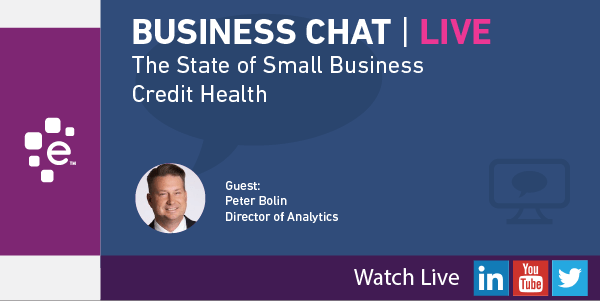
On May 10th we hosted an episode of Business Chat | Live. This episode features an interview with Experian Director of Analytics and Consulting, Peter Bolin. Peter shared highlights from his "State of Small Business Credit" presentation, which he co-presented at our Vision Conference in Orlando with Cristian DeRitis of Moody's Analytics. Gary: Welcome to today's Business Chat Live. I am Gary Stockton with Experian Business Information Services. I'm going to be joined today by Pete Bolin, who's Director of Consulting and Analytics at Experian. Pete just wrapped up his fifth annual State of Small Business Credit at the Vision Conference in Orlando. Peter: Good afternoon Gary, thanks for having me. Gary: Thanks for taking time out of your schedule. I know you guys are busy out there. You just finished the State of Small Business Credit and you presented there with Moody's Analytics. Can you give us some high-level highlights and recap your talk? Peter: Sure, absolutely. I'd love to. One of the things that was presented today in terms of the economic analysis is that we're in very near full employment and they are projecting that the employment numbers are going to start ... the market for employment's going to get really, really tight. One of the other things in addition to that was the real estate market is coming back. He (Cristian DeRitis of Moody's) had some statistics around home prices, particularly on the West Coast rising, so that's good news for real estate market and all the businesses that serve realtors and all the small businesses that serve that space. That's great news for them. I know down here in Florida it's booming. They're experiencing a big boom in real estate as well. This overall opinion on the economy the next 18 months was very bullish. Gary: How about small business and paying their bills? Are they paying down debt, are they taking on new debt, are they taking out loans? Peter: The state of the small business market is pretty stable. Very stable. Delinquencies are down, there is some increase in demand. Some of the utilization ratios are rising, so that's starting to heat up as well. We're also seeing that some of the online market is heating up. Traditional banks are also starting to get back into that small business lending space. Funds are becoming available, the overall economy looks like it's definitely growing, and that's all good signs for a small business market. Gary as you know, small businesses overwhelmingly are the drivers of employment in the United States so all of that bodes well in particular like I said earlier, we already know that Moody's is already predicting a very tight labor market. All of those things are very, very positive for the economy. Gary: Small businesses, they are adding jobs. Are they still confident? Because I heard that their confidence was taking a bit of a dip here in the first quarter. Peter: Actually that's not what we're seeing in the economic data, that small business confidence has slightly ticked up. There was a report in ... CNBC reported just yesterday on their broadcast that they were saying that business optimism was picking up, business owners are really looking forward to the cost savings from Obamacare, so I think that helped as well because we know the Obamacare cost does tend to hit small businesses. They're very optimistic about that, so there is economic data that does suggest that the confidence of small business owners is picking up. Gary: What else did you cover in the talk? What other highlights? Peter: One of the other things that was really interesting is that we tend to say that small business, micro business, are the ones that are driving the employment, and what the data tends to suggest is that's not necessarily the case. It's more in that mid-range business. 50 employees to 100, they are the real, that medium enterprise business, they're the ones that are actually driving that. That was a little surprising to me because I thought entrepreneurs coming in, they're going to employ one, two, three and they are doing that. What the data this time around suggests is that the employment growth is really coming in that 50 to 100 employee space. That surprised me because that was something that I did not expect. Gary: The data that we speak of, this is Experian data right, that we provide to Moody's Analytics, they're the economists that help us with this research. We do this every quarter with them and they produce the Main Street Report which I'm showing up on screen here in case the audience would like to get more information. I'll put a link there. This is commercial data, commercial small business data on credit like payment trends, and also credit scores as well. Peter: That's correct. One of the things that we shared today and one of the things you're going to see in the Main Street Report, is that there are some industries that are starting to recover. For example, one of the things that the data tends to suggest is that the mining industry is coming back. Delinquencies are down, we know from looking at our newly launched in-the-market model, the business credit seeker model, that that industry is looking for credit. They're looking to expand, and given the current climate of Washington and the new administration, there's definitely a strong trend in the mining industry. Their scores are very, very high, the net worth of the owners is relatively high. Delinquencies are down. The report will show that their IPV2 scores are very high. That all bodes well for industry that's going to recover and any one lender out there is looking to target a potential industry, you might want to look at the mining industry. It's starting to come back. Gary: Agriculture as well. I've read the headlines on agriculture, they've had obviously some subsidies there that are helping. That's the one industry that's a real standout right now. Peter: Mining, agriculture is coming back. One of the things the data suggests that Chris was talking about today was he's also bullish on construction. That housing market's picking up, construction traditionally got beat up in the last couple of years. It's starting to come back. Housing's starting to pick up. More construction is starting to pick up. He's really bullish on that one as well. Gary: It sounds like you had a great talk there. I think we'll probably leave it there for now. If folks want more information they can download the latest copy of the Main Street Report and also we'll be covering additional data from the report in a webinar next month, so they can find out about that too. Thanks very much Peter for coming on and spending a few minutes with us. Peter : Thank you for having me Gary. Look forward to having everyone read that report. If you would like to be informed of new episodes of Business Chat | Live be sure to subscribe to our YouTube channel, and follow us on Twitter.

On May 9th we hosted an episode of Business Chat | Live on our YouTube channel and enjoyed an enlightening discussion with Gavin Harding, Senior Business Consultant with Experian Business Information Services. In our chat, Gavin shared highlights from his marketplace lending panel "Bridging The Gap: Reconnecting Investors with Marketplace Lenders in a Volatile World." Gary: We'll get started here. Welcome everybody. My name is Gary Stockton and I'm with Experian Business Information Services and we're gonna do a Business Chat Live today focusing on marketplace lending. I'm happy to be joined by Gavin Harding, and he's a senior business consultant with our business information services team on the global consulting side of the business. And Gavin is out at the Experian Vision Conference, so good morning, Gavin, or good afternoon, I should say. Gavin: Well, it's a little of both. It's morning for you and afternoon form me. Hi, Gary. Gary: So you had hosted a panel discussion yesterday called Bridging the Gap: Reconnecting Marketplace Investors with Marketplace Lenders in a Volatile World. Who was on the panel with you? Gavin: Well we had a really good industry cross section. We had Nat Hoopes who is the executive director of the Marketplace Lending Association. We had Frank Rotman who is the founding partner of QED Investors. And we had Peter Renton, who is the co-founder of LendIt, probably the biggest online marketplace lending conference worldwide. Gary: Peter Renton, he has worked on the LendIt Conference, but also Lend Academy, right? That's a resource for marketplace lending. I listen to his podcast. Gavin: That's right. Gary: We've spoken to Pete a number of times, so he's quite the expert in that field. There's been, in terms of marketplace lending and the news, there has been some negative news around the industry in recent past. Is that something that came up? Gavin: Indeed it did. Over the last 12 to 18 months, there has been a spate of negative publicity. The industry in general, the media has in a way turned on the industry on the basis of a couple of events related to specific companies in the space. The good news is that while that negative publicity had a negative impact last year, it seems that the industry has rebounded. It seems that it was a watershed moment where the industry recommitted to transparency, where they enhanced their whole approach to risk, improved their approach to operations. So if we characterize last year as perhaps a low point, the general theme of the panel was that the industry's really poised for growth, has grown up a lot over the last year. And you know, we talked a lot about credibility and trust and so on, and Nat, from the Marketplace Lending Association, you know, obviously that group started about a year ago and it has now grown to 19 members, so pretty rapid growth. When we think about the 19 members, we estimated that that covers about 90-95% of the total volume of loans and credit facilities in the space. So Nat and his team worked hard on transparency, disclosure, harmonizing standards and so forth, so it was really good to have him on the panel. Gary: And Experian, are we a member of the MLA? Gavin: We are a proud associate member, yes we are. Gary: Excellent. So let's talk a little bit about bank partnerships and what are the kinds of things you were talking about related to bank partnerships? I'm sure that was a big part of the discussion. Gavin: It was. About 24, 36 months ago is when this topic became pretty hot. Lots of conversation between banks and players in the industry. Those conversations in some very high profile ways result in partnerships. We think about Chase, we think about OnDeck. As the year has progressed, what's started to happen is, the mood within the industry has changed. Banks now expect partners in this space to speak their language in terms of risk, to be fully compliant, to understand all the rules and regulations. So the short statement is that in the last year, within the online lending space, compliance has become a competitive advantage. Compliance and operational discipline has become a selling point. So again, that's part of the ongoing theme of the industry and the sector growing up and maturing, so really positive. The one comment that I believe Frank had was as we think about partnerships with the banks, be prepared to hear no a lot before you get to yes. Be prepared to translate between the two very distinct audiences. So in terms of working with banks, use their language, understand the regulations, understand what pressures and demands are on them, and the outcome of that will be a much higher success rate and much more positive, productive conversations. Gary: Excellent. How about the sector performance overall? Is it a growing sector? The banks, I would imagine they've expressed a lot of interest in that. Are we seeing growth in that sector? Gavin: Interesting question. We talked about some of the negative publicity last year. Some of that related to some practices in parts of the industry over the last two to three years, so what's happening now is, because of a refocus and redirection towards credit risk management putting out more and better loans for appropriate returns and so forth, we're seeing the whole industry performance has really been elevated. A lot of the perhaps substandard loans or facilities have now run off, run off meaning they've matured and have been paid off. And the new business that's been put on is more sustainable. It's a more disciplined approach. So yes, overall the sector has improved significantly in terms of performance over the last year. Gary: Excellent. And so, obviously you're meeting with plenty of Experian clients there at the conference. What is this, your third or fourth Vision? Gavin: This is my third and we are here with, I think it's a little over 500 of Experian's clients globally. Many of clients from Europe, Asia, and so on so it's a really great experience. Gary: Yeah, and I saw you had Steve Wozniak, co-founder of Apple Computer as one of your keynote speakers. Gavin: That's right, that's right. On Monday morning for our breakfast presentation, we had the Woz and the big news on that, Gary, is, I know this will probably startle any listeners, that apparently Steve Jobs was not always a very nice person. So that's a newsflash there. Gary: Brilliant guy, though. You can tell I'm a customer. Gavin: Fantastic. The innovation, the dynamism was just radiating from him. He talked about some of his rules of life and he said he was never interested in money, he was interested in thinking and creating things and making things work. Somebody said, "Steve, what motivated you when you were an employee at Hewlett Packard and how does that maybe translate into what we should be doing with employees?" And Steve Wozniak said the major attraction for him at Hewlett Packard was that they let him go into their stores, their inventory, and take whatever electronic parts and components he wanted to create his own products at night. So he would talk about going home, having dinner, and going back, going into the stores, grabbing the components, and then making the products. And some of the original pre-Apple I computers were made from Hewlett Packard parts in Steve Wozniak's - he said didn't actually have a garage. It was more of a basement, but in his house. So really an interesting presentation. A really dynamic guy. We were lucky to have him. Gary: And you also had, an economic presentation by Diane Swonk I think I saw. Gavin: Diane Swonk this morning, really interesting presentation. A little bit of a different perspective than what we often see in terms of the high-level economic factors like just raw unemployment versus full employment and so on. She dug a little bit deeper but beyond that she had a couple of key messages. One of the messages is that we are almost at, depending on definition, full employment. Wages have increased over the historical averages over the last couple of years. So while the broad improvement in the economy was visible, it's only now hitting our pocketbooks. It's only now coming through in consumer spending. So that was pretty positive. She has worked a lot with both the current and past administration in terms of economic advisors and committees and so on, done a lot of work in Washington, DC. She is very much taking a wait-and-see cautious approach in terms of what the administration is saying. She confirmed that the intent or the goal investing heavily in infrastructure should have a dramatic effect on the economy overall, so she was supportive of that. The one question she had, and actually what she said was that her son on the way to school in the morning on the back of a napkin should be able to work out what the plan is to spend and at the same time reduce taxes without the other side of the equation is, to be charitable, going to require further definition. Gary: Wow, sounds like quite a conference. I'm quite envious that I'm not there to enjoy it with you this time, but maybe next time. Gavin, I really appreciate you taking time out. I know that there's a lot of people that you should be meeting with there, so I'm gonna go ahead and maybe end it right there for now. Maybe we can schedule another business chat soon. I know something's coming up with Moody's Analytics and yourself in June and the next release of the Main Street Report for Q1, so I'm excited to maybe talk about that in further detail with you very soon. Gavin: I look forward to it. Thank you very much, Gary. Gary: All right. Thank you very much. If you would like to be informed of new episodes of Business Chat | Live be sure to subscribe to our YouTube channel, and follow us on Twitter.

Experian has released the latest quarterly report on business credit conditions and things are looking very positive. According to the Experian/Moody’s Analytics Main Street Report, credit utilization rates expanded strongly in the first quarter of 2017. Results from the latest Experian/Moody’s Analytics Main Street Report, were presented today during Experian’s Vision Conference. The latest report shows small-business confidence levels eroding however; even though the data reveals their credit performance is going well, with steady declines in delinquencies and increases in credit balances, limits and utilization rates. Latest Experian/Moody's Analytics Main Street Report Reveals Strong Business Credit Conditions - Click to Tweet According to the economists at Moody's, small businesses started the year on a positive note with a decline in early delinquencies (less than 30 days past due) and severe delinquencies (more than 90 days past due). We also saw single-digit gains in credit balances (up 8.8 percent) driven by strong credit utilization rates, while credit limits increased by 4.5 percent. “The market performance data and insights on trends help our small businesses and lenders make more informed decisions,” said Gavin Harding, senior business consultant for Experian. “So while we see that delinquencies are declining and credit limits and utilization rates among small-businesses owners are increasing, we also understand that small businesses don’t have adequate credit to expand at their desired pace. If economic conditions continue to improve this year, we should see financial institutions start to increase credit availability for small-business owners.” Agriculture stands out as an industry bright point, despite four years of declining income for farmers. Performance in the manufacturing, transportation and public administration industries, however, wasn’t as strong. Other sections in the Q1 2017 report include a detailed analysis of: Small-business risk assessment strategies States ranked by their rate of severe delinquency Potential impacts from policy changes Credit quality in different industries A forecasted outlook for the coming months

